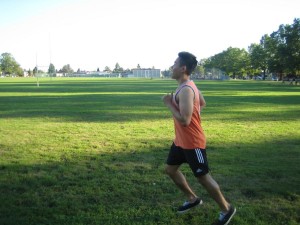A side stitch can be called as a cramp or pain that is experienced by most runners. It can be unpleasant but a side stitch is not an injury. A side stitch is basically a feeling of discomfort on the right or left side of the abdomen, slightly below the rib cage. It can be considered as an internal cramp. This cramp actually occurs in the diaphragm which is the muscle that separates the upper torso from the lower torso and helps with breathing.

It is the up and down movement of the diaphragm and internal organs that produces the spasm. Any activity that involves jumping and jostling can cause side stitch. Due to the nature of running which produces constant bouncing, it is most often linked with temporary side pain.
Due to the abrupt onset and intensity, a side stitch can be alarming for some individuals. On the other hand, there is no need to be alarmed as long as you know what is happening and how to provide the appropriate measures.
Treatment for side stitch
Once the cardiovascular fitness of an individual improves, side stitch will become less common. The breathing is deeper which enables the diaphragm to move through a greater range of motion. On the other hand, side stitches can still occur thus it is best to be familiar on what to do once they occur.
Initially, if the individual breathes in and out in short breaths, instruct the individual to alter the inhalation and exhalation. While running, the individual must breathe in deeply and hold his/her breathe for a moment before rapidly exhaling. By speeding up or slowing down, it can throw off the irregular rhythm between breathing and foot strikes which are likely to cause to problem. Lastly, encourage the individual to rest by walking if other options fail. This will allow the body the chance to catch your breath and allow the diaphragm to work its task normally.
It is also important to observe scenarios where side stitches are likely to occur. Possible scenarios that can increase the risk for getting a side stitch include working out intensely without warming up, running downhill or running after a meal. With this in mind, the individual must avoid a big meal before a run and allow the body a chance to adjust to the pace of the training. For those who are starting to run, they will notice that the diaphragm is not used to the jostling it receives while running downhill and breathing can become heavy.
Obviously, side stitches typically come and go. Even though it can be unpleasant momentarily, the individual can resume in full stride in no time. Aside from side stitch, being with familiar with first aid measures is useful in case of other related injuries.
